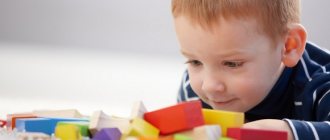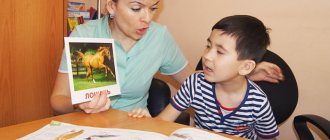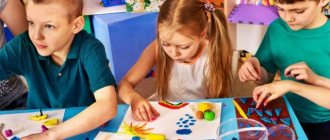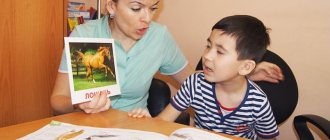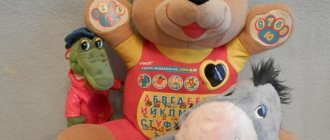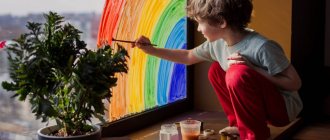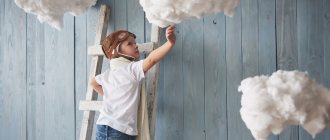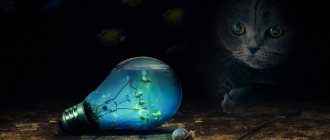Creative imagination is the “engine” that launches the creation of a completely new work or image. Thanks to this mental process, people received masterpieces of art, great inventions and discoveries. And no matter how significant the result, the origins of achievements should be sought in childhood, when the potential of the cognitive sphere begins to form. Therefore, it is important to know how the development of creative imagination occurs in preschoolers, and how to develop personality in this direction.
Brief description of the process
Psychologists insist that creative imagination is special. This is an active learning process.
The imagination can work even in a dream, giving rise to stories, one more incredible than the other. But in this case the nature of the process is passive. Imagination can also be reconstructive, helping to imagine an already familiar object, phenomenon or event. The named types have little to do with creativity. Creative imagination is characterized by novelty and originality of the result. Known schemes and ready-made descriptions are used partially or not at all.
Imagination and cognitive processes
Imagination is a cognitive process, the specificity of which is the processing of past experience.
The relationship between imagination and organic processes is most clearly manifested in the following phenomena: ideomotor act and psychosomatic disease. Based on the connection between human images and his organic states, the theory and practice of psychotherapeutic influences is built. Imagination is inextricably linked with thinking. According to L. S. Vygotsky, it is permissible to say about the unity of these two processes.
Both thinking and imagination arise in a problem situation and are motivated by the needs of the individual. The basis of both processes is advanced reflection. Depending on the situation, the amount of time, the level of knowledge and its organization, the same problem can be solved both with the help of imagination and with the help of thinking. The difference is that the reflection of reality, carried out in the process of imagination, occurs in the form of vivid ideas, while the advanced reflection in the processes of thinking occurs by operating with concepts that allow us to comprehend the environment in a generalized and indirect way. The use of a particular process is dictated, first of all, by the situation: creative imagination works mainly at that stage of cognition when the uncertainty of the situation is quite great. Thus, imagination allows you to make decisions even with incomplete knowledge.
In its activity, the imagination uses traces of past perceptions, impressions, ideas, that is, traces of memory (engrams). The genetic relationship between memory and imagination is expressed in the unity of the analytical-synthetic processes that form their basis. The fundamental difference between memory and imagination is revealed in the different direction of the processes of active operation with images. Thus, the main tendency of memory is to restore a system of images that is as close as possible to the situation that took place in experience. Imagination, on the contrary, is characterized by the desire for the maximum possible transformation of the original figurative material.
Imagination is included in perception, influences the creation of images of perceived objects and, at the same time, itself depends on perception. According to Ilyenkov’s ideas, the main function of imagination is the transformation of an optical phenomenon, consisting of irritation of the surface of the retina by light waves, into the image of an external thing.
Imagination is closely related to the emotional sphere. This connection is dual in nature: on the one hand, an image can evoke strong feelings, on the other, an emotion or feeling that once arises can cause active imagination. This system is discussed in detail by L. S. Vygotsky in his work “Psychology of Art”. The main conclusions he comes to can be stated as follows. According to the law of the reality of feelings, “all our fantastic and unreal experiences, in essence, proceed on a completely real emotional basis.” Based on this, Vygotsky concludes that fantasy is the central expression of emotional reaction. According to the law of unipolar energy expenditure, nervous energy tends to be wasted at one pole - either at the center or at the periphery; any increase in energy expenditure at one pole immediately entails its weakening at the other. Thus, with the intensification and complexity of fantasy as the central moment of the emotional reaction, its peripheral side (external manifestation) is delayed in time and weakens in intensity. Thus, imagination allows you to gain a variety of experiences while remaining within the framework of socially acceptable behavior. Everyone gets the opportunity to work through excessive emotional stress, discharging it with the help of fantasies, and thus compensating for unmet needs.
Distinctive features of a child's creative imagination
The imagination of a preschooler, like all cognitive processes at this age, most often acts involuntarily. It is still inappropriate to talk about special plans and goals characteristic of the boundless flight of thought. But active imagination and the desire to try out many things from one’s own experience indicate the beginning of the development of creative imagination in preschool children. Signs of creativity are clearly visible.
- Brightness and originality of fantasies and images
Children create incredible stories in which they give toys or ordinary objects “magical” properties. This happens because preschoolers are immersed in the world of fairy tales and cartoons. They may imagine themselves as characters from a fairy tale and be creative in describing the character's strengths or frightening traits. In addition, the child’s experience is not sufficient to understand the phenomena of the world around him, and he himself comes up with explanations for them.
- Active use of well-known images in new conditions
Developing creative abilities, the child repeats himself less and less often and more often practices creating new images, placing fictional characters in different situations. For example, an older preschooler is able to compose several stories about a fairy-tale hero. The image of the hero is the result of the work of creative imagination, and numerous stories with his participation appear due to the growth in the content of the child’s creativity.
The imaginary plot is embodied in the drawing
The fact that a child’s idea of something often goes beyond the usual boundaries also speaks about creative imagination. So, when completing the task of drawing rain in a fairyland, children imagine it as a shooting star, candy or flower rain.
Imagination and creativity
Creativity is the process of creating fundamentally new or improved methods for solving tasks and problems. It becomes obvious that imagination and the creative process are very interconnected.
Imagination here is defined as the transformation of ideas about reality and the creation of new images on this basis. It works every time a person thinks about some object or phenomenon, without even coming into direct contact with it. Thanks to creative imagination, the transformation of this idea is carried out.
Creative thinking and imagination have their own specific characteristics. Through this process, it is possible to create completely new, unique representations based on the subject's own ideas and thoughts, which express the personality of the creator. It can be voluntary or involuntary. To a large extent, creative imagination or inclination towards it is determined from birth, but it can also be developed.
The development of creative imagination occurs in three stages. At first, a creative idea arises. In the mind of the creator, a fuzzy image first appears, an initial idea that can be created arbitrarily, without purposeful comprehension of the idea. The second stage involves hatching a plan. A person thinks about strategies for translating an idea into reality and mentally improves it. The third stage completes the incubation of the idea and brings it to life.
The development of creative imagination is carried out in the process of transition from involuntary to voluntary, from recreating to creative. During childhood and adolescence, creative imagination has characteristic features; it is special for its magic, fantastic judgments about the world and the absence of a critical component of thinking and rationality. During adolescence, complex changes occur in the body, and therefore in consciousness as well. Objectivity is developed, perception becomes more critical. Rationality of perception appears a little later, when a person becomes an adult. The adult mind begins to control the imagination, often too much criticality and practicality weakens the processes of fantasy, overfilling them with meaning, loading them with some kind of information that is actually unnecessary.
There are certain methods for developing creative thinking. The most practical method is to read literature and watch scientific films, expand the range of your knowledge, draw knowledge from different areas of life, memorize and analyze information. In this case, a large amount of materials for creative processes appears.
Imagine imaginary objects, try to carry out various manipulations with them. For example, imagine the sea, hear the sound of breaking waves, feel the breath of sea freshness, imagine entering the water, feel its temperature, and so on. Or another example, imagine a pear. Imagine its shape, size, color. Use tactile perception, imagine it when it is in your hand, feel its surface, aroma. You can mentally take a bite of it and imagine the taste.
In order for the imagination to be voluntary, it is necessary to work on it through regular training. To make the effect even greater, you need to look for sources of inspiration, ask friends for help, and ask about their ideas. Try group work to create ideas, sometimes the results are very unique, and a person becomes more active if the process of imagination occurs in a circle of other creative individuals.
When a preschooler is receptive to the development of creative imagination
In psychology, the stages of development of the creative imagination of preschoolers are conventionally distinguished.
The initial stage appears when children, already knowing the real purpose of an object, use it in a new capacity. A replacement appears, but only an object that is somewhat similar (shape, color...) is assigned to the role of “substitute”. For example, imitating measuring temperature, a preschooler will take a stick as a thermometer; and handing an orange ball to a peer, he will start talking about orange.
During this age period, it is useful to show your child how to find new uses for ordinary materials. For example, you can show him different ways of drawing - with a brush, pencil, charcoal, chalk, etc.
Drawing with children 3-4 years old does not mean creating specific drawings. Kids depict scribbles, spots, chaotic strokes. And then, with the help of adults, they see something in the drawn lines and curls. At this age, it is important to broaden the child’s horizons so that he develops a stock of knowledge on which he will rely in his creativity.
From reality to fantasy images
At the next stage, at 4-5 years old, previously acquired skills are improved. Fantasy is still based on the idea of a real object, and new images appear unintentionally. Therefore, even a 5-year-old child will rarely respond to an offer to compose a fairy tale. He is not yet able to complete such a task at the request of an adult.
Younger preschoolers can perform certain actions and then tell what happens in their game or activity. This means that the intention is formed after the action. In such situations, creative imagination also takes place, but its level is only initial.
Children 6-7 years old can already demonstrate independent creative activity. They are able to choose a goal, formulate a creative idea and strive to realize their plans. Imagination is based on the development of creative abilities in preschool children. Older children are already able to include any small element into the overall composition, imagine the expected result before it appears, combine disparate details with one idea, etc.
At this stage, the process of fantasy itself captivates. Parents often notice that their son or daughter comes up with ideas “on the fly.” This skill is especially evident in the writing of stories by older preschoolers. A significant breakthrough occurs due to the general development of the child’s cognitive sphere and the enrichment of speech.
Classification of imagination processes
1.According to the results:
- Reproductive imagination (recreating reality as it is)
- Productive (creative) imagination: with relative novelty of images;
- with absolute novelty of images.
2.According to the degree of focus:
- active (voluntary) - includes reconstructive and creative imagination;
- passive (involuntary) - involves unintentional and unpredictable imagination.
3.By type of images:
- specific;
- abstract.
4. By methods of imagination:
agglutination - the connection of objects and properties that are incompatible in reality; hyperbolization - an increase in the object, its parts and the intensity of properties; substitution - replacing an object, process or parts with others that are somewhat similar; concentration (concentrating integration) - complete or significant inclusion of some parts into others, including through combination, “fusion”, “dissolution”; integration - in technology, combining into one coherent whole objects (assemblies, mechanisms) that have a relatively independent purpose; miniaturization - reduction of an object, its parts and the intensity of properties
A technique for creating a new mental image, the opposite of hyperbolization; dismemberment and elimination - analysis, division of the whole into parts and with the removal of some of them; transfer (heuristic transduction) - transfer of parts, processes from one integral system to another; permutation - moving parts of a whole to other places, including with a change in interaction; regeneration - completion of missing, removed one or more parts; imparting resemblance, similarity in form, material, structure, operating principle, for example, of technical devices to living beings; opposition is a technique for transforming ideas, consisting in a conscious search and use of phenomena, processes, objects that have properties opposite to the original image; reintegration - completion of one main, important part or process into a whole; schematization - highlighting differences and identifying similarities; typification - highlighting the essential, repeating in homogeneous phenomena; transformation - transformation of the external form.. 5. According to the degree of volitional effort:
5.According to the degree of volitional effort:
- deliberate;
- unintentional.
Directions for the development of creative imagination in preschoolers
The development of creative abilities requires stimulation and a systematic approach. In order for a preschooler’s imagination to be distinguished by originality and boldness of ideas, it is necessary to expand the techniques and the stock of concepts that the child could use in fantasy.
It is necessary to help children accumulate impressions and awaken their interest in art. Important:
- do not limit the spontaneity of creative expression
- guide in finding creative solutions
- welcome the child's independence
- show him new available materials for creativity.
Let us dwell on those types of activities that most effectively stimulate the development of imagination at this age stage.
Visual activities
Drawing becomes a field for a child’s creative self-expression earlier than other activities. Already at an early preschool age, children draw circles and other simple shapes, putting their own meaning into these images. Every year the filling of children's drawings with details increases. The preschooler learns to highlight the details of a holistic image, or, conversely, to create a multifaceted image based on a given element.
A task like “Complete the figure”, “Draw 5-8 different drawings based on the figure”, etc. stimulates the search for new images.
An older preschooler is able to form a creative idea and imagine the final artistic image, which will be embodied on a sheet of paper, canvas or... asphalt. You should not limit it to a narrow framework or a specific task. You can ask them to come up with a name for your drawing first.
Didactic game as a means of developing creative potential
The use of didactic materials provides ample opportunities for developing the imagination of a preschooler. Imagination and creativity can be developed by offering children various pictures (fables, parts of an image) or by involving children in games with objects, or by offering verbal forms of tasks (figure out how ...; complete the story).
Didactic games are valuable because they encourage children to fantasize and form the arbitrariness of the creative process. The game creates conditions in which the child can look at a familiar object in a new way. The tasks encourage him to think about things in which he himself is not sufficiently interested.
Creative imagination in design
Working with a construction set helps preschoolers understand how new images are created, how to combine parts in a different, unusual way.
Construction is especially useful because children test their ideas immediately: as soon as certain outlines flash in their imagination, they immediately try to make the presented image.
Construction involves the use of more than just a specific set of parts.
Images can be sculpted from plasticine or clay. Modeling stimulates the development of creative imagination, allowing you to experiment with shape and size. Of course, a child will not immediately cope with a complex task, for example, sculpting a fairy-tale animal. The role of an adult is important here, who will select tasks available to the preschooler, gradually complicating them.
The effect of music on the imagination
Music is a special condition for the development of creative imagination, since when used skillfully it improves and enriches the auditory perception of a preschooler. First, at the suggestion of an adult, children try to catch the sound of notes, either raindrops, the sound of footsteps, or the rustling of leaves.
With systematic lessons, the preschooler gradually develops the skill of listening to the sounds that fill the space. Music, as a means of activating the creative imagination of preschoolers, provides additional material that will color children’s fantasies and will contribute to their more vivid expression.
So, despite the fact that creative imagination is characteristic of preschool age, it is necessary to stimulate its development. By supporting children's interest in creativity and organizing special activities, adults help the preschooler develop, along with imagination, other cognitive processes - thinking, memory, attention, perception.
The connection between imagination and creativity
The peculiarity of the processes of imagination is that they do not simply create the opportunity to reproduce individual human impressions in the same forms and combinations in which they were perceived, but create completely new combinations and forms. It is in this feature that the deep internal connection of imagination and creativity finds its manifestation, which also has a focus on creating something new, unique and inimitable. The product of creativity can be material values, scientific ideas or artistic images.
There are a huge number of different types of creativity in the world: scientific, technical, literary, artistic, etc. It should be noted that none of them is possible without the participation of imagination processes.
In the process of fulfilling its main function, which is to anticipate what does not yet exist in reality, imagination contributes to the emergence of intuition, conjecture, and insight as the central link of the creative process.
Imagination helps scientists and researchers look at the phenomenon being studied from a different angle, in a new light. In the history of science there are many examples of the emergence of images of the imagination, which were subsequently implemented into new ideas, discoveries and inventions.
In the process of creating new literary works, the author carries out the process of realizing his aesthetic imagination in images. It is their brightness, breadth and depth of the phenomena of the surrounding reality they cover that are subsequently felt by readers as something new and unique and evoke in them feelings of co-creation.
We should not forget about the role of creativity and imagination in teaching activities and pedagogical creativity.
Its peculiarity lies in the fact that the results of pedagogical work do not manifest themselves immediately, but over time. In this regard, it is necessary to present them in the form of a model of the child’s emerging personality, a certain way of his behavior and thinking in the future. It is these features of the pedagogical process that determine the choice of certain methods of teaching and upbringing, the necessary pedagogical requirements and influences on the child.
Every person has their own creative abilities, and they can vary greatly. Their formation is determined by a large number of factors, which include:
- congenital inclinations;
- features of human activity;
- features of the environment and society;
- conditions of training and education that influence the development of a person’s unique characteristics of mental processes and personality traits that contribute to creative achievements.
Difference between imagination and fantasy
Imagination is a type of thinking when we create new ideas and images “in our head” based on the knowledge we have. Moreover, they are formed on the basis of real knowledge, that is, theoretically they can be brought to life. This is how imagination differs from fantasy.
When imagining, adults and especially children also come up with new, but still unrealistic, images and situations. Fantasy allows us to create absolutely any plot, even a fairy tale. To fantasize, you don’t need to take into account any physical laws and have great knowledge.
Let's say we need to solve a problem. Imagination will suggest a non-standard, but real and completely feasible solution, based on our experience and knowledge. But with the help of imagination we can solve it any way we want. There are no restrictions. Therefore, it is best for children to begin developing their thinking with fantasies.
Imagination in adults develops through expanding their horizons, accumulating information, experience and images. It has periods of recession and recovery. The latter are also called inspiration. However, scientists have come to the conclusion that inspiration most often comes to us during the work process, when we have already put in a lot of effort and work.
Classification of types of imagination:
- Active (voluntary) - the deliberate construction of images with a consciously set task in a particular type of activity, develops in the process of labor.
- Passive (involuntary) - the emergence of new ideas when conscious control on the part of the individual is weakened and without his direct intention.
Active imagination
Voluntary imagination develops from childhood, when children try on certain roles in games. The need for the most accurate representation of the role leads to active work of the imagination. It continues to develop in further human activity, when in order to complete a particular task he needs to present the result of the work, as well as the necessary operations.
In the process of active imagination, a person’s awareness and his active attitude to the formation and transformation of images play an important role. The basis of such activity is the ability to evoke and change the necessary ideas.
Tasks of active imagination:
- Conveying reality through fantasy - reproducing the phenomena seen, remembering them, transforming reality.
- Regulation of behavior - predicting a program of action, adjusting behavior in accordance with the goal, establishing a relationship between activity and its results.
- Managing emotions - relieving tension through calming images.
In the active imagination group, the following subtypes are distinguished:
- productive (creative);
- reproductive (recreating);
- dream.
Productive (creative) imagination
This type is responsible for the formation of ideas that have no prototypes in the real world. A model of a certain situation, phenomenon or object is formed in a person’s mind based on life experience and knowledge. The difficulty lies in combining the existing elements into a single whole, thereby creating the uniqueness of the final image.
Productive imagination manifests itself in the process of human creativity: art, science, technical activity.
Reproductive (recreative) imagination
In the course of reproductive imagination, new images arise based on the perception of descriptions, diagrams, drawings, and records. The goal of this type of imagination is to create an image as close to reality as possible.
Recreating imagination plays an important role in learning, allowing you to understand the essence of what is being studied through the images created.
Dream
It is a special form of active imagination, which consists of creating an image of what a person would like to accomplish. A dream is aimed at the future and acts as a reason, a motive for a particular human activity.
Passive imagination
Involuntary imagination begins to emerge in young children. It is most vivid in dreams, in a half-asleep state, when ideas arise, change, and combine spontaneously. However, passive imagination also occurs in the waking state.
Passive imagination manifests itself in two subtypes:
- intentional (dreams);
- unintentional.
Intentional imagination (daydreams)
Creating images that are initially perceived by a person as impracticable and unrealistic. Dreams usually occur in a person with weakened control of consciousness. In this case, control is manifested in the selection of images that would evoke a certain emotional state in a person.
Unintentional imagination
It appears in special states of the individual or organism, when a person does not control the process of creating images. Varieties are dreams and hallucinations.
Dreams - images that arise in a person during the REM sleep phase, represent the creation of new images as a result of a combination of information from long-term memory, as well as information received during the day.
During hallucinations, the image appears without a real external stimulus. The specificity is that this image is assessed by a person without criticism, as a truly existing object. The causes of hallucinations can be both organic factors (exposure to drugs, alcohol, temperature, lack of oxygen) and psychogenic (state of passion).
